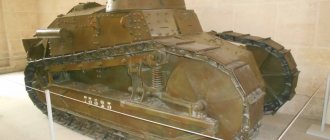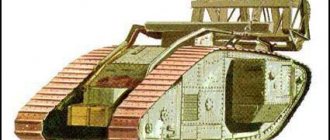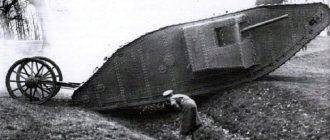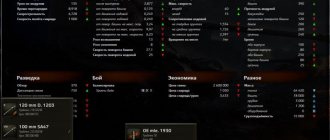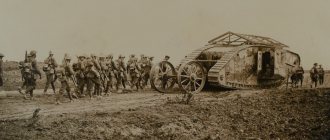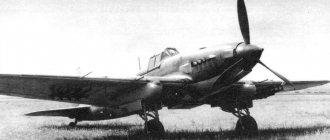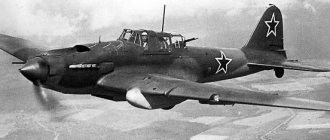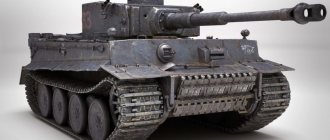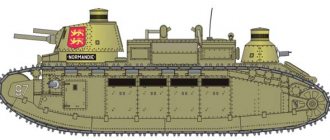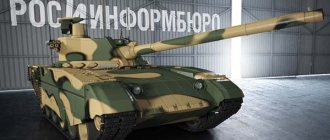Testing, production, operation
According to the customer's abbreviation (the abbreviated name of the 7th department of the General Directorate of the War Ministry), the tank became known as A7V. In this abbreviation, the letter "V" was sometimes deciphered as "bauart vollmer " ("Volmer design"). From “500” onwards they received chassis numbers, under which the tanks were subsequently listed. A mock-up of the chassis and a wooden mock-up of the armored hull were demonstrated on January 16, 1917 in Berlin-Marienfeld. The War Ministry prepared an order for the construction of 100 chassis on January 20.
Demonstration on January 16, 1917.
There, on April 30, they demonstrated the first prototype of the tank , consisting of a working chassis and a mock-up of an armored hull; on May 14, in Mainz, it was shown to the Headquarters of the High Command, for greater similarity, the vehicle was loaded with 10 tons of ballast. Testing of the prototype of the A7V tank took place in parallel with the half-track Marienwagen 11 (on the basis of the chassis of which self-propelled anti-aircraft and anti-tank guns were later manufactured), and also presented its version of the “combat artillery vehicle” KD 1. However, based on the test results, the A7V was chosen by the High Command .
Demonstration of April 30, 1917
It was planned to receive the first 5 ready-made A7Vs by July 15, 1917, the next 5 tanks and 40 unarmored chassis by August 1, and the last 49 chassis by September 1. The participation of French tanks in the battle on the Aisne River at Chemin des Dames on April 16, 1917 contributed to the acceleration of work on the A7V. Tests carried out in the spring and summer of 1917 revealed a number of technical shortcomings, the correction of which delayed the work, and was also affected by a growing shortage of materials. It was only by the end of October 1917 that the construction of the first production tank, the A7V, was completed. The armored body was mounted on the frame from above and assembled by riveting onto a steel frame. There were two types of hulls - produced by Krupp and Rechling.
| Heavy tank A7V (hull) | ||
| Click image for a larger view | ||
Frame . Each side of the hull was assembled from five vertical sheets, the roof - from four longitudinal and one transverse, the front and rear parts - from three sheets each. These corps received tanks No. 540, 541, 542, 543 and 544. Corps. They were distinguished by their solid sides, made from a single sheet. Tanks No. 502, 505, 506, 507 had them. The thickness and quality of the armor made it possible to withstand armor-piercing rifle bullets at ranges of 5 meters, as well as high-explosive fragmentation shells from light artillery. The armor protection of the hull was somewhat increased by the inclined installation of the sheets and the “ship” shape of the front and rear parts. The weak points were the joints of the armor plates (primarily at the corners) and, as the allies claimed, bullet fragments and lead splashes penetrated through them. In the roof of the hull, front and rear, there were large ventilation grilles, which partially served to illuminate the fighting compartment of the tank. The upper deckhouse was assembled from five removable sheets and folded during transportation and on the march. The A7V tank could be transported on a standard platform with the top deckhouse folded. The inspection hatches along the perimeter of the cabin were covered with folding lids, which made it possible to adjust the height of the open gap. In the roof of the cabin there was a hatch with a hinged lattice lid.
Heavy tank A7V (hull)
Heavy tank A7V
| Click to enlarge |
The tank commander was located on the upper platform on the left; to the right and slightly behind him was the driver. The upper platform was located at a height of 1.6 m above the floor. Two mechanics were located in seats in front and behind the engines and had to monitor their operation. Gunners, loaders and machine gunners were located around the perimeter of the hull. Folding doors (on the starboard side - in front, on the left side - in the rear) served for boarding and disembarking the crew. There were two narrow steps outside the door. Inside the building, two staircases led to the upper platform (front and back).
Armament
The armament of the A7V tank was not immediately chosen. But in the end, it was decided to limit ourselves, following the example of the British, to a 57-mm gun. We chose 57-mm Maxim-Nordenfeldt caponier guns, captured in October 1914 in the Antwerp fortress. The gun had a barrel length of 26 calibers, a recoil length of 150 mm, and a maximum firing range of 6400 m. The ammunition load included 100 rounds of high-explosive fragmentation shells, 40 armor-piercing shells and 40 buckshot shells. High-explosive fragmentation shells had a fuse with a moderator and could be used against field fortifications. The initial speed of the armor-piercing projectile was 487 m/s, armor penetration was 20 mm at a distance of 1000 m and 15 mm at 2000 m.
The first-built A7V tanks also differed in the type of gun installation (except for the hulls mentioned above).
- The first tanks assembled with Rechling hulls in the front part had a frame (goats) on which a rotating artillery mount of the Artillery Test Commission system was mounted. The wide mantlet (shield) of the gun swung in a vertical plane, and the small inner shield swung in a horizontal plane. The installation was equipped with a counterweight and two guidance flywheels.
- Tanks No. 540-544 with Krupp hulls received pedestal installations, which were developed for the A7VU tank, but were used on the A7V. The gun's pointing angle horizontally was 45° in both directions, and vertically +20°. The gunner was located on a seat mounted on a pedestal bracket and rotated with the gun. The seat rested on a roller that moved along the floor of the body. A telescopic sight was used for aiming. The mask consisted of two parts. A large semi-cylindrical shield was connected to the stand and rotated together with it in a horizontal plane; on the left side it had a vertical slot for aiming. In the vertical cutout in the middle of the shield there was a shield connected to the gun barrel and moving in a vertical plane. Thus, the gunner sat as if inside the half-turret. The loader was located to his right on a stationary seat. The narrow field of view of the sight and the location of the gun at the forward point led to the fact that the gunner lost sight of the target whenever the tank moved. Therefore, inspection hatches with double-leaf covers were made on both sides of the gun embrasure. And yet , the tank could only conduct aimed fire from a standing position .
| Demonstration of MG.08 on the A7V 542 “Elfriede” tank | |
| Click image for a larger view | |
Standard 7.92-mm MG.08 machine guns (Maxim systems) were mounted on swivel mounts with semi-cylindrical masks and vertical guidance screw mechanisms. The horizontal guidance angle of the machine gun was ±45°. The crew of each machine gun consisted of two people. The machine gunners sat on low-back seats riveted to the floor. A box with a belt for 250 rounds was attached to the shooter's seat. The tank could carry 40-60 belts (10-15 thousand rounds). The sides of the hull and doors had hatches with armored shutters for firing from the crew’s personal weapons, which included a light machine gun, carbines, pistols, hand grenades and even one flamethrower. Thus, the tank crew was armed like a fort garrison, but in practice this was not fully observed (at least not a single tank received a flamethrower). Tank No. 501 turned out to be completely “symmetrical” - instead of an artillery mount, there were two machine guns in its front part, as well as in the rear, which ensured truly all-round fire. Later, the tank was re-equipped with a 57-mm cannon on a pedestal mount.
The generator was installed to power internal and external lighting. The target pointer (internal control) was mounted on the roof of the hull above the artillery mount and was turned by the tank commander using a cable. Above the right inspection hatch in front of the gun crew there was a panel with white and red lights: their combinations meant the commands “Load”, “Attention” and “Fire”. But as in all tanks of that time, the commander gave commands to the rest of the crew by shouting, drowning out the noise of the engines. There were no means of external communication. A hatch was provided for signaling with flags. There was also a version of a communications tank, equipped with a radio station, armed with only two machine guns, with a crew of 11-13 people, including radio operators and observers. But this project remained a theory.
Design[edit]
Tank A7B
The A7V was 7.34 m (24 ft 1 in) long and 3 m (9 ft 10 in) wide, with a maximum height of 3.3 m (10 ft 10 in). The tank had 20 mm of steel sheet on the sides, 30 mm in the front and 10 mm on the roof; [5] However, the steel was not hardened armor plate, which reduced its effectiveness. This was enough to stop machine gun and rifle fire, but not larger caliber ones.
The crew officially consisted of at least 17 soldiers and one officer: commander (an officer, usually a lieutenant), driver, mechanic, mechanic/signalman, 12 infantrymen (six machine gunners, six loader) and two gunners (gunner and loader). . A7Vs often entered combat with up to 25 men on board.
A7V
| A7V | |
| Gewicht(t) | 30 |
| Length (mm) | 7.350 |
| Breite | 3.050 |
| Hohe | 3.300 |
| Bodenfreiheit | 200 |
| Motor | Daimler |
| PS | 2×100 |
| Geschw. (km/h) | 10 |
| Kraftstoff (1) | 500 |
| Fahrbereich (km) | 35 |
| Besatzung | 18 |
| Bewaffnung | |
| Kanone (Kal/Mun) | 5,7/180 |
| MG (Anzahl) | 6 |
After the war[edit]
Tank memorial sign 1921
SS officer Joseph "Sepp" Dietrich (third from right) with a 1921 tank memorial badge. Joseph Goebbels is second from left.
Two cars very similar to the A7V, one of which was named Hedi
, were among several used by
the Kokampf
Freikorps
tank unit , to quell civil unrest in Berlin in 1919.
They were built using a chassis from the Überlandwagen
and were armed with four MG08/15 machine guns. It is unknown whether there were armored vehicles. [8]
There is a popular myth that France gave several A7Vs to Polish forces, who used them during the Polish-Soviet War of 1919–1920. However, reliable sources reject this idea because the fate of every A7V that was in service during World War I is known and does not include transfers to Poland, and there is no known official record or photographic evidence of A7Vs being in Polish service. [9] [10]
The A7V design is featured on the 1921 Tank Memorial Badge, which was awarded to German World War I veterans who served as tank crews.
K-Wagen
| K-Wagen | |
| Gewicht(t) | 150 |
| Length (mm) | 12.700 |
| Breite | 6.000 |
| Hohe | 3.000 |
| Bodenfreiheit | |
| Motor | Daimler |
| PS | 2×650 |
| Geschw. (km/h) | 7,5 |
| Kraftstoff (1) | 3.000 |
| Fahrbereich (km) | kA |
| Besatzung | 22 |
| Bewaffnung | |
| Kanone (Kal/Mun) | 4×7,7/8000 |
| MG (Anzahl) | 7 |
Propulsion system[edit]
On rough terrain
Power came from two Daimler mid-mounted 4-cylinder petrol engines producing 75 kW (101 hp) each; The A7V carried 500 liters (110 US gal; 130 US gal) of fuel. Top speed was around 15 km/h (9.3 mph) on roads and 5 km/h (3.1 mph) in the country. The 24-wheel suspension was individually leaf sprung, an advantage over the unsprung British tanks. The A7V's power-to-weight ratio was 5.1 kW/t (6.8 hp/t), it could negotiate trenches up to 2.1 m (6 ft 11 in) wide, and its ground clearance ranged from 190 to 400 mm ( from 7.5 to 15.7 inches). ).
Compared to other World War I tanks, the A7V's speed was quite high, but the vehicle had very poor off-road performance and a high center of gravity, making it prone to getting stuck or overturning on steep slopes. The large front overhang and low ground clearance meant that trenches or very muddy areas were impassable. The driver's view of the area directly in front of the tank was obscured by the body of the vehicle, which meant there was a blind spot of about 10 meters (33 ft). However, in open terrain the A7V could be used with some success and offered more firepower than available armored cars.
LK II
| LK II (Kanone) | |
| Gewicht(t) | 8,5 |
| Length (mm) | 5.080 |
| Breite | 1.950 |
| Hohe | 2.675 |
| Bodenfreiheit | 400 |
| Motor | Diverse |
| PS | 40-60 |
| Geschw. (km/h) | 14 |
| Kraftstoff (1) | 150 |
| Fahrbereich (km) | 70 |
| Besatzung | 3 |
| Bewaffnung | |
| Kanone (Kal/Mun) | 3,7/100 |
| MG (Anzahl) | 0 |
Surviving example[edit]
Frontal armor and main gun of the German A7V Mephisto tank.
The only surviving A7V is Mephisto
, abandoned by the crew during the Battle of Villers-Bretonneux in April 1918. British and Australian troops discovered it three months later and brought it to Australia in 1919 as a trophy. The car sat outside the old Queensland Museum in Bowen Hills, Brisbane, under an open-sided shed for many years until it was moved to the new Queensland Museum on Southbank in 1986. It was damaged by floods in 2011 and sent for restoration. Railway Museum Workshops, North Ipswich, Queensland. Following restoration, it was displayed at the Australian War Memorial, Canberra, from 2015 to 2022. It has now been returned to the Queensland Museum. [15]
A7V 504 Schnuck
on display at the Northern Imperial War Museum, Manchester.
Links[edit]
Notes
- Hull front: 30 mm (1.2 in), hull rear and sides: 15 mm (0.59 in), hull top: 6 mm (0.24 in) Funk (2003), p. 135, commander's cupola: 20 mm (0.79 in) front, 15 mm (0.59 in) rear and sides and 5 mm (0.20 in) top Funk (2003), page 135
- Pledge (2006), pp. 7-10.
- ↑
Tucker (2004), pp. 24–25. - Collateral (2006), p. 7.
- ^ B with Hundleby & Strasheim (1990), pp. 23, 34, 61, 79.
- Forty (1995), pp. 39-47.
- Jump up
↑ Koch (1994). - Schneider & Strasheim (1990).
- Hundleby & Strasheim (1990), p. 150.
- Collateral (2006), p. 43.
- Jump up
↑ Foley (1967). - "57 mm Maxim-Nordenfelt" Sockel "Gun". Imperial War Museum
. Retrieved December 10, 2012. - Destroyed tank "562" photo
- ↑
Tank "563", photo - "Queensland's beloved Mephisto is back on display at the Workshops Railway Museum". Rail Museum Workshops
. March 14, 2013 - "A7V Replica Added to Collection". Tank Museum, Bovington
. November 29, 2012 Archived from the original on September 18, 2013. Retrieved April 7, 2013. - Hundleby & Strasheim (2010), p. 100.
- "Tankodrome Milovice". Horydoly.cz
. 2011. Retrieved 24 June 2016.
Bibliography
- Foley, John (1967). A7V Sturmpanzerwagen
. Armor in profile. Great Bookham, Surrey: Profile Publications. - Forty, George (1995). Tank battles from the Great War to the Persian Gulf
. Stroud, Gloucestershire: Alan Sutton Publishing Ltd., pp. 39–47. ISBN 978-0-7509-0479-7. - Foss, Christopher F. (2003). Encyclopedia of tanks and armored fighting vehicles. Staplehurst, Kent: Spellmount. ISBN 978-1-86227-188-3.
- Funk, Wolfram (2003). "zur Technik des Sturmpanzers A7V (Technology of the Sturmpanzerwagen A7V)". Sturmpanzerwagen A7V: vom Urpanzer zum Kampfpanzer Leopard 2: ein Beitrag zur Militär- und Technikgeschichte
[
Sturmpanzerwagen A7V: from early tanks to the Leopard 2 battle tank: contributions to military and technological history
].
Wehrtechnik und wissenschaftliche Waffenkunde (in German). 15
. Bonn: Bernard and Graefe. ISBN 978-3-76376-243-9. - Hundleby, Maxwell; Strasheim, Rainer (1990). German A7V tank and captured British Mark IV tanks from the First World War
. Haynes Foulis. ISBN 978-0-85429-788-7. - Hundleby, Maxwell; Strasheim, Rainer (2010). Sturmpanzer A7V: First of the Tanks
. Tankograd. ISBN 978-3-936519-11-2. - Koch, Fred (1994). Beutepanzer im Ersten Weltkrieg
[
Captured tanks in the First World War
] (in German). Wölfersheim-Berstadt: Podzun-Pallas-Verlag GmbH. ISBN 978-3-7909-0520-5. - Schneider, Wolfgang; Strasheim, Rainer (1990). German tanks in the First World War - A7V and early developments
. West Chester, PA: Schiffer Publications. ISBN 978-0-88740-237-1. - Tucker, Spencer (2004). Tanks: An Illustrated History of Their Impact
. Santa Barbara, CA: ABC-CLIO. ISBN 978-1-57607-995-9. - Zaloga, Steve (2006). German tanks 1914–18
. Oxford, UK: Osprey Publishing. ISBN 978-1-84176-945-5. - The A7V tank can be used in the first-person shooter game called Battlefield 1. The rare female versions of this tank had flamethrowers on the sides rather than machine guns, making it more effective for close combat than soldiers dangerously using them for open exposure.
Replies [edit]
Tank Museum in Bovington's A7V replica on public display (June 2009)
The running replica was built in 2009 by Bob Grundy of British Military Vehicles, Wigan, UK, which specializes in restoring old military vehicles. The replica is made from plywood and angle iron using the engine, transmission and tracks from two Fordson County Crawler tracked farm vehicles and painted in A7V color #504, Schnuck
. It was acquired by the Bovington Tank Museum in November 2012. It is on display at the museum and is included in outdoor exhibitions along with the museum's replica of the British Mark IV, created for the film War Horse. [16]
Replica of the A7V at the German Tank Museum
A static copy is in the German Tank Museum in Münster. It's called Wotan
, but is largely based on the extant
Mephisto design
.
A mobile mock-up of the A7V appears in the East German feature film Trotz Alledem
(1972), which tells the story of Karl Liebknecht and the 1919 Spartacist uprising in Berlin. [17]
Model among the vehicles at the Milovice tank track in the Czech Republic. [18]
Leonardo da Vinci tank concept
The tank concept was invented in the early 20th century
, but the history of this type of machine
began back in the 15th century.
Leonardo
da Vinci
already had an idea for a machine that could be called
the “great-grandfather”
of the modern tank.
As you can see in the photo above, the famous Italian came up with the idea of a machine in which a person sits inside, and in the body there is a weapon. However, the military had to wait several hundred years to implement this idea.
